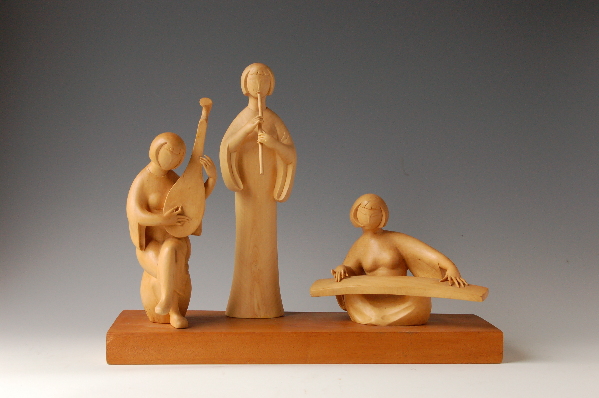| Situated in the south of the Yangtze River Delta area in east China, Zhejiang Province was named after its biggest river, Qiantangjiang River, also known as "Zhejiang River," which means a "zigzag river" in Chinese language. Blessed with green mountains and exquisite waters, and boasting the beautiful city of Hangzhou with the reputation of "a paradise on earth," the place is known to the world as one of the most beautiful tourist destinations in China.
But in addition to the picturesque sceneries, Zhejiang, as one of the important origins of Chinese civilization, also enjoys rich cultural heritages. Some of them cost you an expensive flight ticket to have a glimpse, but others may appear at you front door someday.
During the Zhejiang Cultural Festival, part of the cultural events of the Year of China in South Africa, a group of artists from Zhejiang will arrive in Cape Town to present the art works and techniques that have been cherished for hundreds of years through an exhibition from October 16 to 22, 2015, offering a brief overview of the intangible culture heritage of the oriental paradise on earth.

Yueqing Boxwood Carving
The history of boxwood carving, a technique that also originated from Yueqing City, dates back about 900 years. Boxwood, the material used for carving, has a yellowish color that darkens over time and gives off a classical aura. Boxwood is a slow-growing plant with a diameter of only 15 cm after 40 or 50 years of growth. Therefore it is very precious and rare. The main artistic feature of boxwood carving is that all the carvings are made with an aim to maintain the wood's original shape as much as possible. Though many methods of carving are applied, the most prominent and popular way is still circular carving in making boxwood carvings. There are three categories of Yueqing Boxwood Carving: the traditional genre, which features human figures both in individual form and in groups; the root carving genre, which is carved out of b
Yueqing Fine Paper Cutting
Fine paper cutting, a unique craftsmanship in Yueqing City, can be traced back to over 700 years ago. In ancient times, during Spring Festival, every household in Yueqing would make a dragon boat lantern to celebrate the New Year. Paper-carving works of various designs and shapes were pasted to decorate the lanterns. Different from the paper cutting skills in north China, it employs cutting knives of different blades instead of scissors. The blade of a cutting knife can be as thin as 0.35 mm. The Yueqing paper-cuts are famous for their beautiful design patterns and exquisite workmanship. You could even find the finest 52 lines chiseled on a piece of one-inch square paper.
West Lake Silk Umbrella
The handmade umbrella is made of bamboo strips for framework and silk for the surface. It's elegant, light and easy to carry. The creator had a very strict system when choosing material, e.g. the bamboo should be three years old, its diameter about 5 cm; the length between bamboo knots 25-26 cm. A silk umbrella has to go through 18 procedures before it's perfectly made. Traditional Chinese painting and embroidery techniques are employed to decorate the silk surface.
Taishun Puppetry
China has many types of puppets. The puppets from various places have their own unique characteristics. Taishun puppet show, with a history dating back 800 years, features an exclusive type of background music. The puppet head is made by carving on wood with exquisite craftsmanship. Some puppet heads have mechanisms inside and are controlled through 16 to over 30 silk threads to make their eyes, nose, mouth and tongue movable. A typical Taishun puppet show group consists of seven to 10 members, usually farmers. Playing a puppet show is what they like to do after working on the farm.
Longquan Celadon
Longquan Celadon refers to a famous type of celadon-glazed porcelain produced in a Longquan Kiln. Named after its birthplace Longquan City, located in the southwest of Zhejiang, Longquan Kiln was one of the five best kilns used during China's Song Dynasty (960-1279) when the skill and fame reached its peak.But the history of Longquan Celadon dates back to the Western Jin Dynasty (265-316). Longquan Celadon can be classified into two categories: Ge Kiln and Di Kiln (elder brother and younger brother in Chinese). The celadon produced in Ge Kiln features a black clay body and irregular cracks on their glaze, while Di Kiln celadon features white clay coated in a thick glaze that gives them a translucent and jade-like appearance. |